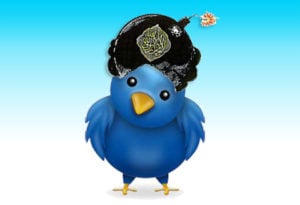 And you thought your biggest social media worry was being defriended.
And you thought your biggest social media worry was being defriended.
Last week, the New York Times published an interesting piece on the use of social media by terrorist groups. They focused on a recent Twitter battle instigated by the Somalia-based, loosely al-Qaeda linked, al-Shabab. Their target…African Union peacekeeping forces and the Kenyan army. The Times writes,
“[T]errorism experts say that Twitter terrorism is part of an emerging trend and that several other Qaeda franchises — a few years ago the Shabab pledged allegiance to Al Qaeda — are increasingly using social media like Facebook, MySpace, YouTube and Twitter. The Qaeda branch in Yemen has proved especially adept at disseminating teachings and commentary through several different social media networks.
“Social media has helped terrorist groups recruit individuals, fund-raise and distribute propaganda more efficiently than they have in the past,” said Seth G. Jones, a political scientist at the RAND Corporation.”
But wait, al-Shabab decries all things Western, right? (As the Times points out, al-Shabab forbids everything from Western movies to bras.) However, “Western or not,” Al-Shabab has realized what hundreds of millions of us have…social media is a super effective tool. (And given that, just this week, Saudi billionaire Prince Alwaleed bin Talal invested $300 million in Twitter, what is and isn’t Western is becoming less and less clear. )
Tools like Twitter and Facebook 1) are cheap and accessible, 2) facilitate quick, broad dissemination of messages 3) allow for unfettered communication with an audience without the filter or “selectivity” of mainstream news outlets. (No longer do we have to depend on CNN or Al-Jazeera to tell us what terrorists groups are plotting and why… we can check out their latest tweets.) As the Times notes, much of the messaging from al-Shabab is in “colloquial, often clever, English” using expressions like “Think long. Think hard.”—a clear indication that their trying to reach broad, possibly American or expat community audiences in the US and Europe.
But in the case of al-Shabab and other tech-savvy terrorist groups, shouldn’t we blame the messenger and NOT the message service? One of the lessons learned from the Arab Spring is that social media is an amazing tool for organizing, reporting and informing. I was in Morocco most of last January and the best source of updates for the quickly evolving situations in Tunisia and Egypt were friends in the region on Facebook and tweeting journalists and activists on the ground. (Even as I write this post near the OccupyDC tents in McPherson Square in Washington, DC, my iPhone asks me every few minutes if I want to connect to the protesters’ “OccupyDC” wireless network.)
So, where do we go from here? (THAT’S the 140-character question.) How do we non-terrorists share this new uncharted ‘space’ created by social media with those who would turn our helpful tools into tactical weapons? What are the rules for engaging with groups like al-Shabab via social media? (Threatening video diatribes clandestinely sent to news stations are one-sided messages, but social media is about dialogue and two-way communication.) Does responding, retweeting, rebutting, condemning or, [gasp!], “liking” messages from terrorists groups via social media give them a platform or, like it or not, do they already have it? Is it possible that the ease of communicating via social media may actually work AGAINST terrorist groups in that once-menacing, clearly articulated agendas by a central figure become jumbled, inconsistent 140 character quips that few take seriously, posted by anyone with a Twitter handle and the temerity to self-associate themselves with established terrorists groups?
A Salon article today by Glenn Greenwald takes the NY Times to task for some of its assertions from last week article and asks some of the same questions I raise. Greenwald also explores unclear role that governments can/should have in shutting down suspected terrorist groups’ social media accounts (and the possible futility of doing so.)
Do you have the answers? Just direct message me or write on my wall…
(Btw, If you want to really understand what is happening in Somalia, Dr. J. Peter Pham just published a really well-done paper in the Journal of the Middle East and Africa, “State Collapse, Insurgency, and Famine in the Horn of Africa: Legitimacy and the Ongoing Somali Crisis.” As always, Dr. Pham lays out a very clear description of the history, players and stakes of the crisis.)